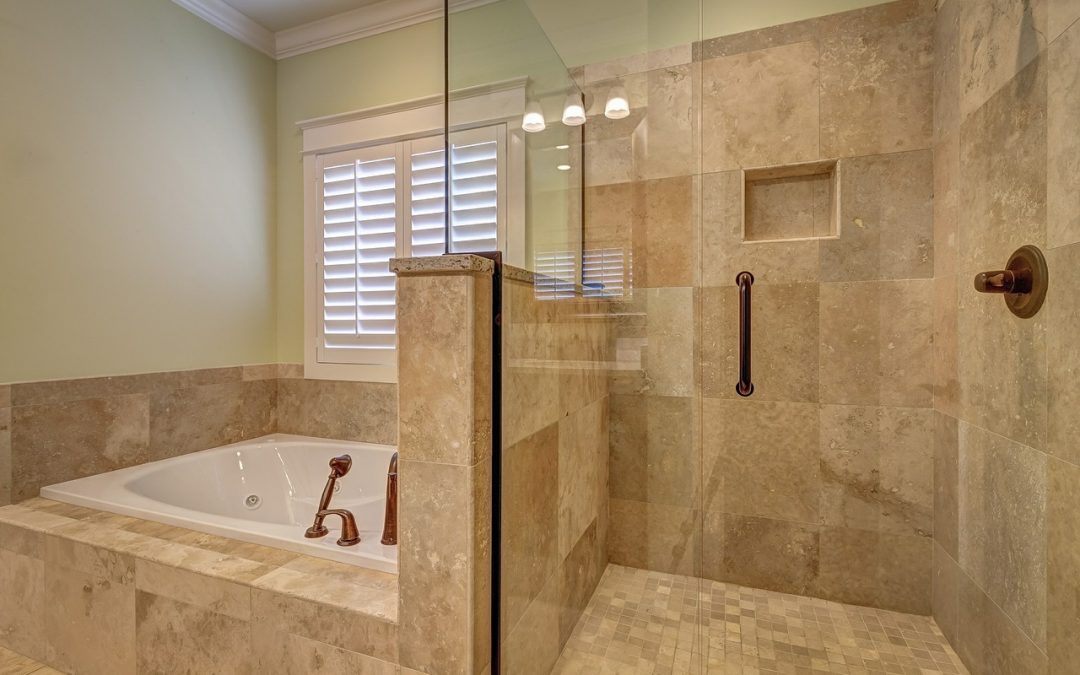Bathroom ventilation systems are designed to exhaust moist air and odors to the exterior of the home. Failure to properly vent moisture from the bathroom can cause biological growths like mold and mildew, and can cause cosmetic and even structural damage. A typical bathroom ventilation system consists of a ceiling fan unit connected to a duct that terminates at the roof, exterior walls, or soffit. Ventilation systems should be installed in all bathrooms, including those with windows, since windows will not be opened during the winter in cold climates.
Fan Function
The fan may be controlled in one of several ways.
- Most are controlled by a conventional wall switch.
- A timer switch may be mounted on the wall.
- A wall-mounted humidistat can be pre-set to turn the fan on and off based on different levels of relative humidity.
It’s not always easy to tell whether the bathroom vent fan is operating as it should. Newer fans may be very quiet but work just fine. Older fans may be very noisy or very quiet. If an older fan is quiet, it may not be working well. Generally, a properly operating fan should hold a piece of tissue or toilet paper against the grill when the fan is on.
Bathroom ventilation fans should be periodically checked for dust buildup, which can impede air flow. Particles of moisture-laden animal dander and lint are also attracted to the fan because of its static charge. Homeowners should regularly clean dirty fan covers to prevent this kind of buildup.
Defects
The following conditions indicate insufficient ventilation in the bathroom:
- stains on the bathroom walls and/or ceiling;
- corrosion of metal parts of the vent system;
- visible mold on the walls and/or ceiling;
- peeling paint or wallpaper;
- frost on the interior of the bathroom window;
- high indoor humidity; and/or
- improper duct termination.
Duct Termination
The most common defect related to the bathroom’s ventilation system is improper termination of the duct. Vents must terminate at the home’s exterior.
The most common improper terminations locations are:
- mid-level in the attic. These are easy to spot;
- beneath the insulation in the attic. The duct may terminate beneath the insulation or there may be no duct installed
Improperly terminated ventilation systems may appear to work fine from inside the bathroom, so the homeowner or inspector may have to look in the attic or on the roof. Sometimes, poorly installed ducts will loosen or become disconnected at joints or connections. Ducts that leak or terminate in the attic can cause problems from condensation. Warm, moisture-laden air will condense on cold attic framing, insulation and other materials. This condition has the potential to cause health and/or decay problems from mold, or damage to building materials, such as drywall. Moisture buildup also reduces the effectiveness of thermal insulation. Mold growth is another undesirable consequence of improperly vented damp air. Even though mold growth may take place primarily in the attic and basement/crawlspace, mold spores can be sucked into the living area of a home by low air pressure, which is usually created by the expulsion of household air from exhaust fans in bathrooms and kitchens, and from clothes dryers and heating equipment.
Improper Ventilation
Ventilation ducts should be made from appropriate materials and oriented effectively in order to ensure that damp air is properly exhausted.
Ventilation ducts must:
- terminate outdoors. Ducts should never terminate within the building envelope;
- contain a screen or louvered (angled) slats at its termination to prevent bird, rodent and insect entry;
- be as short and straight as possible and avoid turns. Longer ducts allow more time for vapor to condense and also force the exhaust fan to work harder;
- be insulated, especially in cooler climates. Cold ducts encourage condensation;
- protrude at least several inches from the roof (in cases of roof terminations)
- be equipped with a roof termination cap (in cases of roof terminations) that protects the duct from the elements; and
- be installed according to the manufacturer’s recommendations.
Above all else, a bathroom ventilation fan should be connected to a duct capable of venting water vapor and odors to the outdoors. Mold growth within the bathroom or attic is a clear indication of improper ventilation that must be corrected in order to avoid structural decay and respiratory health issues for family members.
For more home-safety tips, please click here https://greydoginspections.com/blog/
To learn more about Grey Dog Home Inspections, LLC, please click here https://greydoginspections.com/


Recent Comments